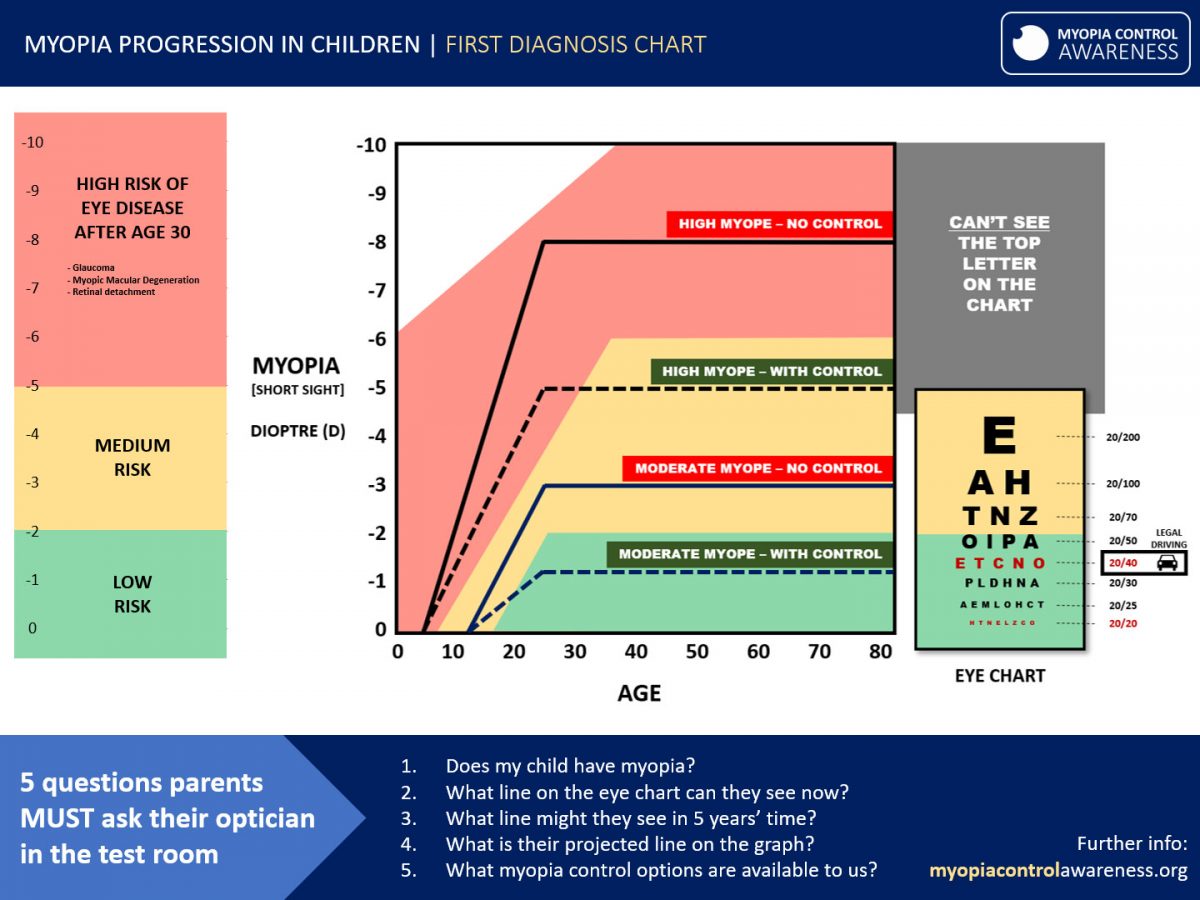Long Term Eye Health
Myopia causes the eye to elongate, increasing the likelihood of retinal degeneration. If we liken the eye to a camera, the retina serves as the film, capturing our vision. Damage to the retina can result in irreversible sight loss that cannot be corrected with glasses or surgery, potentially leading to partial or complete blindness.
The encouraging news is that myopia progression in children can now be controlled. Early intervention is key to improving their vision throughout their lifetime and reducing the risk of eye diseases later on.

TRAFFIC LIGHTS & YOUR CHILD
(on the chart above)
RED – High myopia. Early intervention is critical.
AMBER – Moderate myopia. Aim for the green zone.
GREEN – The target zone for optimal eye health.
AN ‘EYE TEST’ ASSESSES THE HEALTH OF THE EYE
Regular eye tests are essential for assessing eye health, not just for determining the need for glasses. Considering that children are expected to live well into their nineties, their eyes need to remain healthy for a long time. The red zone indicates poorer eye health, potentially leading to difficulties like inability to see clearly without correction, limitations in driving, and a higher risk of eye diseases later in life. Taking proactive steps now to maintain their vision in the green or amber zones will benefit them in the future.
Every dioptre matters. Lower myopia levels now translate to better eye health later on.
